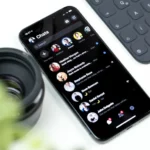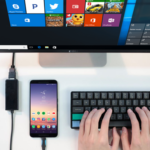
Would you prefer to open Facebook links on a specific browser rather than the app? The following steps will guide you on how to disable Facebook’s In-App Browser.
By default, the Facebook app utilizes its built-in browser for opening links. However, if you prefer to use a different web browsing application of your choice instead- here is how you can disable Facebook’s in-app browser functionality.
Disabling the Facebook’s In-App Browser
In the past, Facebook provided greater link control to its app users by enabling them to open external browsers for a majority of links. Yet, our recent assessment conducted in 2024 exposes that this functionality is no longer available on either Android or iOS apps.
Instead, the possibility of launching links in an external browser is limited to links present only in Facebook messages. Links accessed from either Facebook pages or posts will promptly open within their internal browsing system. Subsequently, you must manually trigger the link’s opening via your preferred web browser outside of the app interface
Although you can disable Facebook’s in-app browser for messaging links, the app’s browser will still open other types of links.
Turning Off Facebook’s Mobile Browser
It’s easy to disable Facebook’s in-app browser, but the privacy option that allows links to be opened externally only applies to those sent within messages.
When you click on a link outside of your current Facebook feed, such as on a specific page within the app, it automatically employs the built-in browser.
To launch such links on your preferred browser, simply tap the three dots located at the top of the page and choose “Open in external browser”. Subsequently, this will trigger your mobile device’s default browser to display that app.
Whether or not you are tracked while browsing a website on your phone can vary depending on the browser used and privacy settings configured.
Using an external browser may potentially lead to reduced tracking occurrences.
To make Facebook open message links in an external browser, adhere to these guidelines:
- To access the hamburger menu on the app’s homepage, simply tap your profile icon located in the top right corner. If you are an iOS user, please note that this icon will appear at the bottom right instead.
- To proceed, please scroll down and choose Settings & Privacy followed by clicking on the option named Settings.
- Under the Preferences section, simply scroll down and tap on the Media option.
- To activate the external browser option, simply navigate to the Media menu and select “Open links in external browser” by ticking its corresponding box. On iOS devices, you’ll have to use a toggle switch instead.
Upon enabling this setting, Facebook will alert you upon your first attempt to open a link within a message that it is directing you away from messaging. Simply tap the “Continue” button to access said link.
Conclusion
While Facebook’s in-app browser offers some advantages, privacy-focused individuals may prefer to utilize an outside browser.
Disabling the link history feature of Facebook is advisable to elevate one’s level of confidentiality.
The off-Facebook activity tool is available for use, which can limit the data collection Facebook conducts on you while the app isn’t in use.
Regrettably, it is no longer possible to entirely deactivate Facebook’s in-app browser within the app. Nevertheless, you can utilize your privacy settings to turn off the integrated browser for message links.





